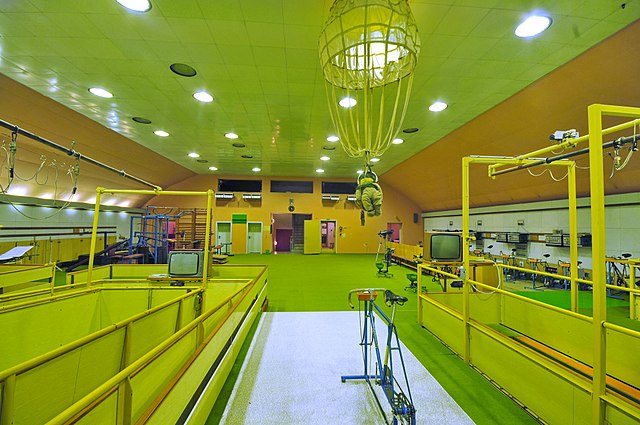Altitude training is the practice by some endurance athletes of training for several weeks at high altitude, preferably over 2,400 metres (8,000 ft) above sea level, though more commonly at intermediate altitudes due to the shortage of suitable high-altitude locations. At intermediate altitudes, the air still contains approximately 20.9% oxygen, but the barometric pressure and thus the partial pressure of oxygen is reduced.
Altitude training in the Swiss Olympic Training Base in the Alps (elevation 1,856 m or 6,089 ft) in St. Moritz.
Altitude training in a low-pressure room in East Germany
Altitude is a distance measurement, usually in the vertical or "up" direction, between a reference datum and a point or object. The exact definition and reference datum varies according to the context. Although the term altitude is commonly used to mean the height above sea level of a location, in geography the term elevation is often preferred for this usage.
A Boeing 737-800 cruising in the stratosphere, where airliners typically cruise to avoid turbulence rampant in the troposphere. The blue layer is the ozone layer, fading further to the mesosphere. The ozone heats the stratosphere, making conditions stable. The stratosphere is also the altitude limit of jet aircraft and weather balloons, as the air density there is roughly 1⁄1000 of that in the troposphere.



